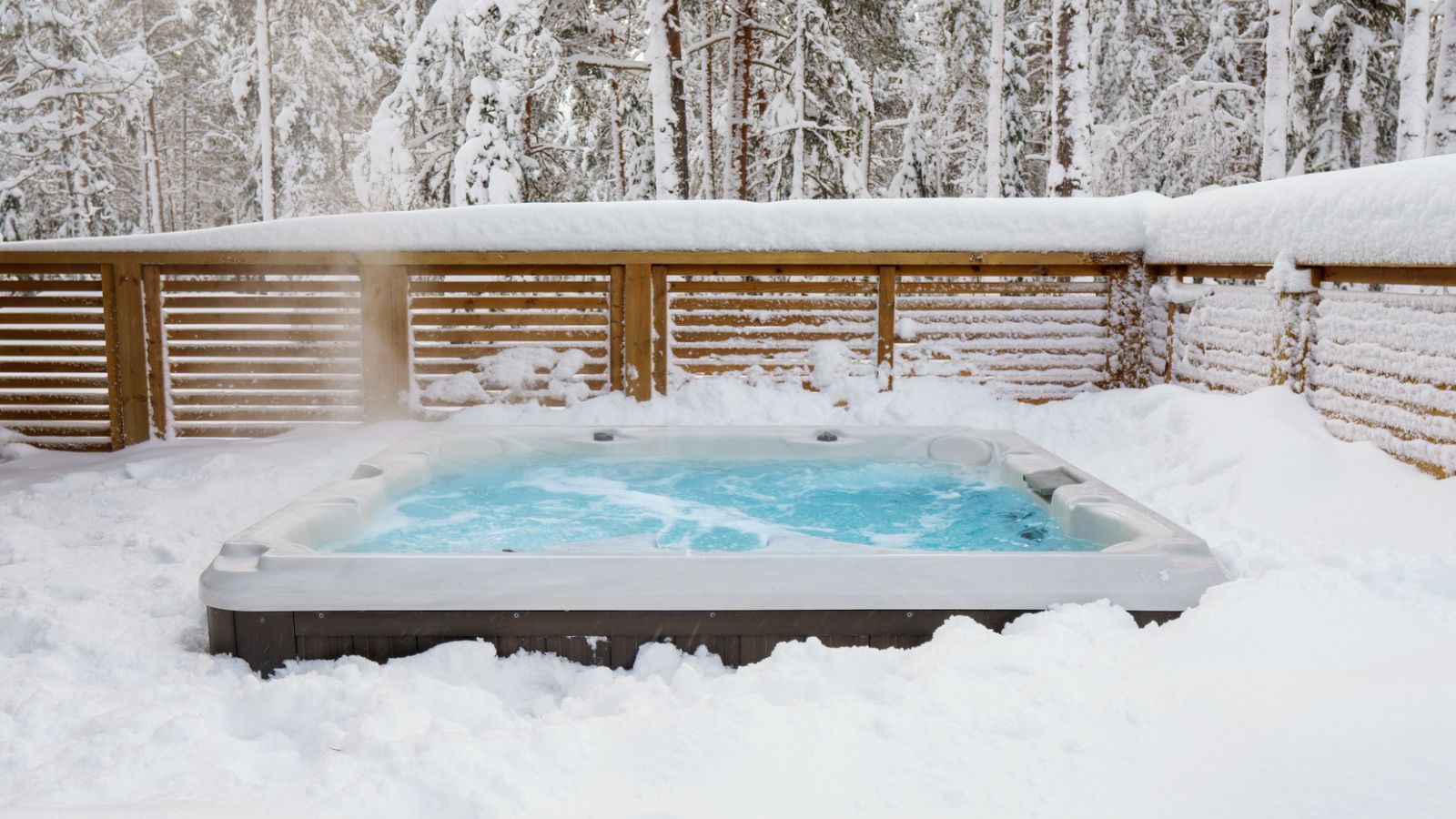
A hot tub is the perfect finishing touch to a backyard, providing year-round place to socialize and ease sore muscles.
However, hot tub ownership comes with a lot of responsibilities, and one of them is winterizing. If you live somewhere cold and know you won't use your hot tub over the winter, winterizing is essential. If you don't winterize your spa, the water in the lines or shell and crack the tub.
I spoke to hot tub experts about the best ways to winterize a hot tub and ensure it lasts through the colder months.
1. Drain the hot tub
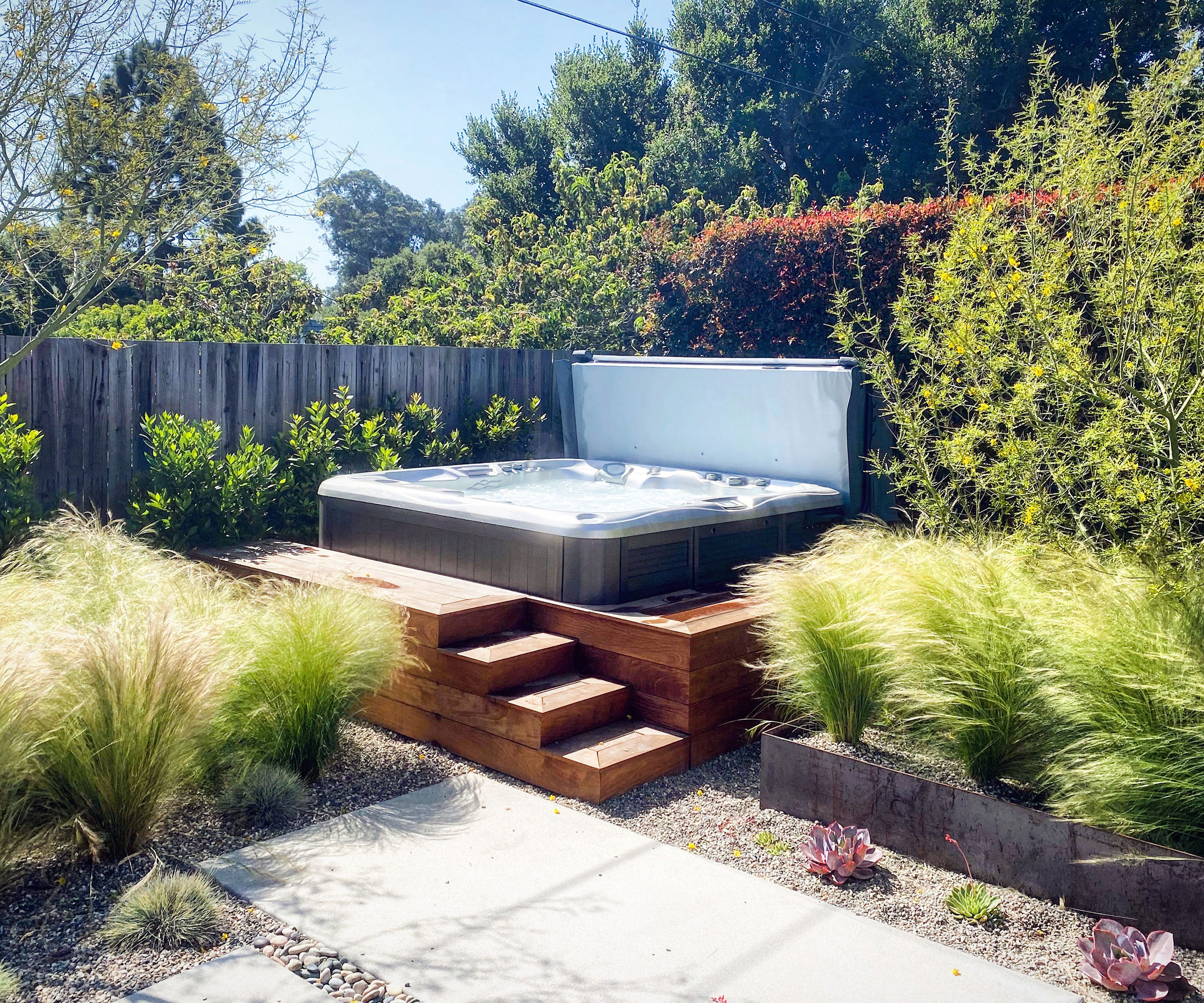
The first step in winterizing a tub is to drain the water, but professional expert Rafi Friedman gave me a tip that can save you some work. 'When winterizing your hot tub, start by shocking the water to get it as clean as possible before draining, then wash and rinse the tub once.' This can save you from having to scrub the entire tub, but it needs a little forward planning - if you have a big freeze coming in soon, you might not have time to do this.
Draining is a simple process. Hot tub expert Scott Weitz says 'Start by turning off the hot tub at the breaker to protect the pump and heater. Next, attach a garden hose to the drain plug and direct the water to a safe drainage area. Open the drain valve to allow the water to flow out, or, for quicker draining, use a submersible pump.' This will drain the hot tub. However, this step isn't done yet.
Dylan adds 'Once drained, flush the system with clean water through the jets and drain again if needed to ensure it's completely clear.' After this is done, you need to remove any remaining standing water.
Hot tub expert Troy Lindbeck says 'A wet/dry vac should then be used to remove the remaining standing water from the tub and the hoses, and a blower will help dry out all the lines. This is a very important step as any water left in the spa can ruin the plumbing.'
Above all, be careful when draining the water. Hot tubs are filled with gallons of water that can drown plants or create standing water. Rafi Friedman says 'Make sure you're draining the water to an area that won't cause problems down the road. Water running towards your foundation or into your neighbors' yards is less than ideal.'
2. Clean the hot tub
With all the water drained, you need to clean the shell of the hot tub. Firstly, ensure, you have the right chemicals for the job. Troy Lindbeck says 'It’s important to purchase a shell cleaner specific for hot tubs. Check your hot tub owner’s manual to see what chemicals are approved because different surface types may use different chemicals.'
After you've worked out the right chemicals, you need to get in there and clean all the jets and filters. Scott Weitz says 'Wipe down the shell with a non-abrasive cleaner or a water-vinegar solution. Use a small brush to scrub the jets and other fixtures. Make sure to rinse everything thoroughly to remove any remaining cleaner.'
Once the shell is clean, it's time to tackle the filters. Hot tub expert Andrei Newman says 'Once water has been drained out of the hot tub thoroughly, next it’s time to clean the hot tub. A soft cloth or sponge will do just fine. It is critical to wipe away any debris because such remains will only be detrimental in the long run. You will also need a filter cleaning solution to soak the filters as they assist in keeping water quality when the tub is in use. After cleaning the filters, rinse and dry them well.'
3. Dry the hot tub
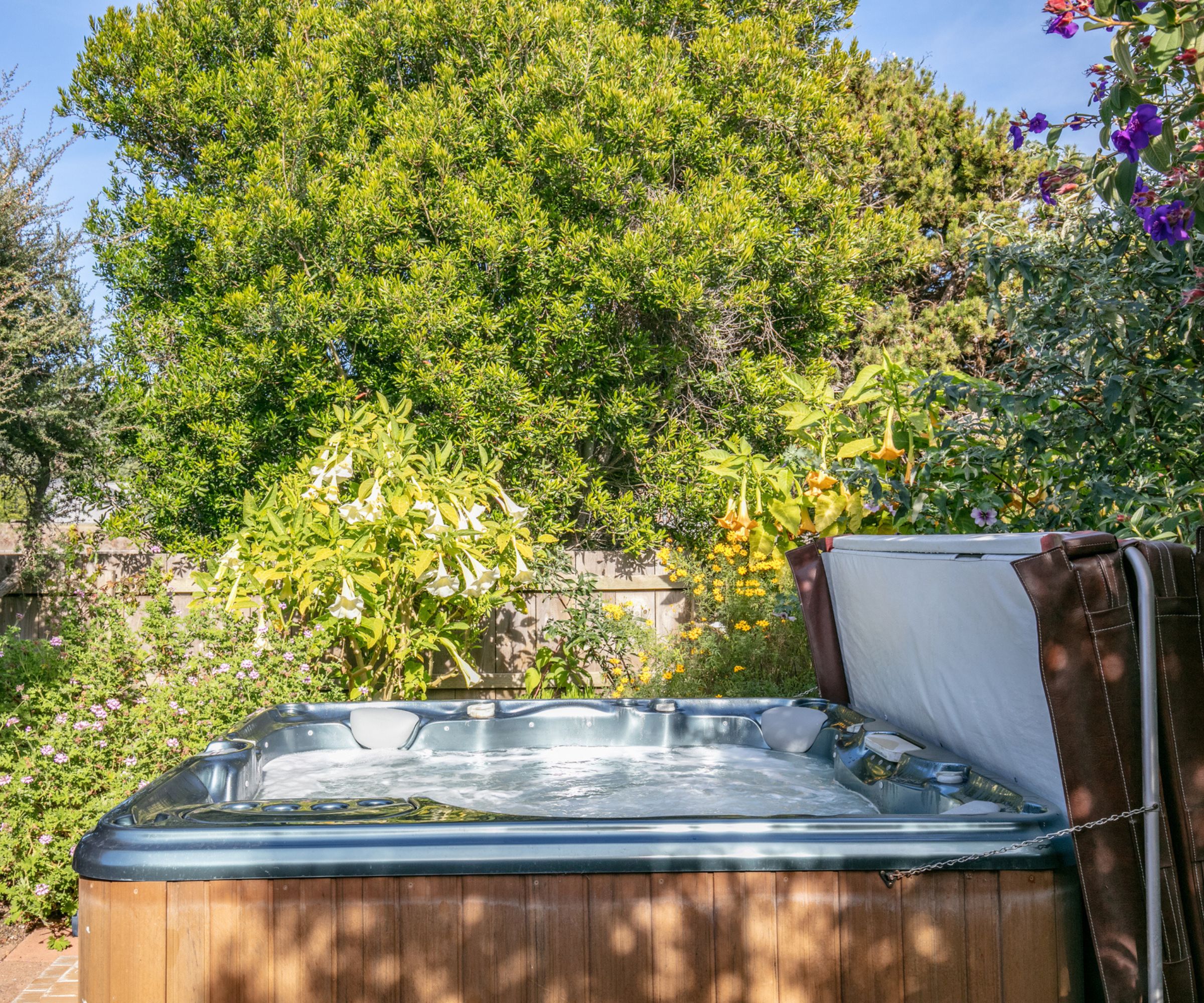
The next step is the easiest - you just need a sunny, dry day. Once you're sure there's no more water in the pipes, give the hot tub a final dry.
Scott Weitz says 'Wipe the interior surfaces with a soft towel. Then, leave the cover open for a few hours to allow the remaining moisture to evaporate. To be extra thorough, use a wet/dry vac to blow out any water left in the jets, pipes, or pump area.'
4. Add antifreeze
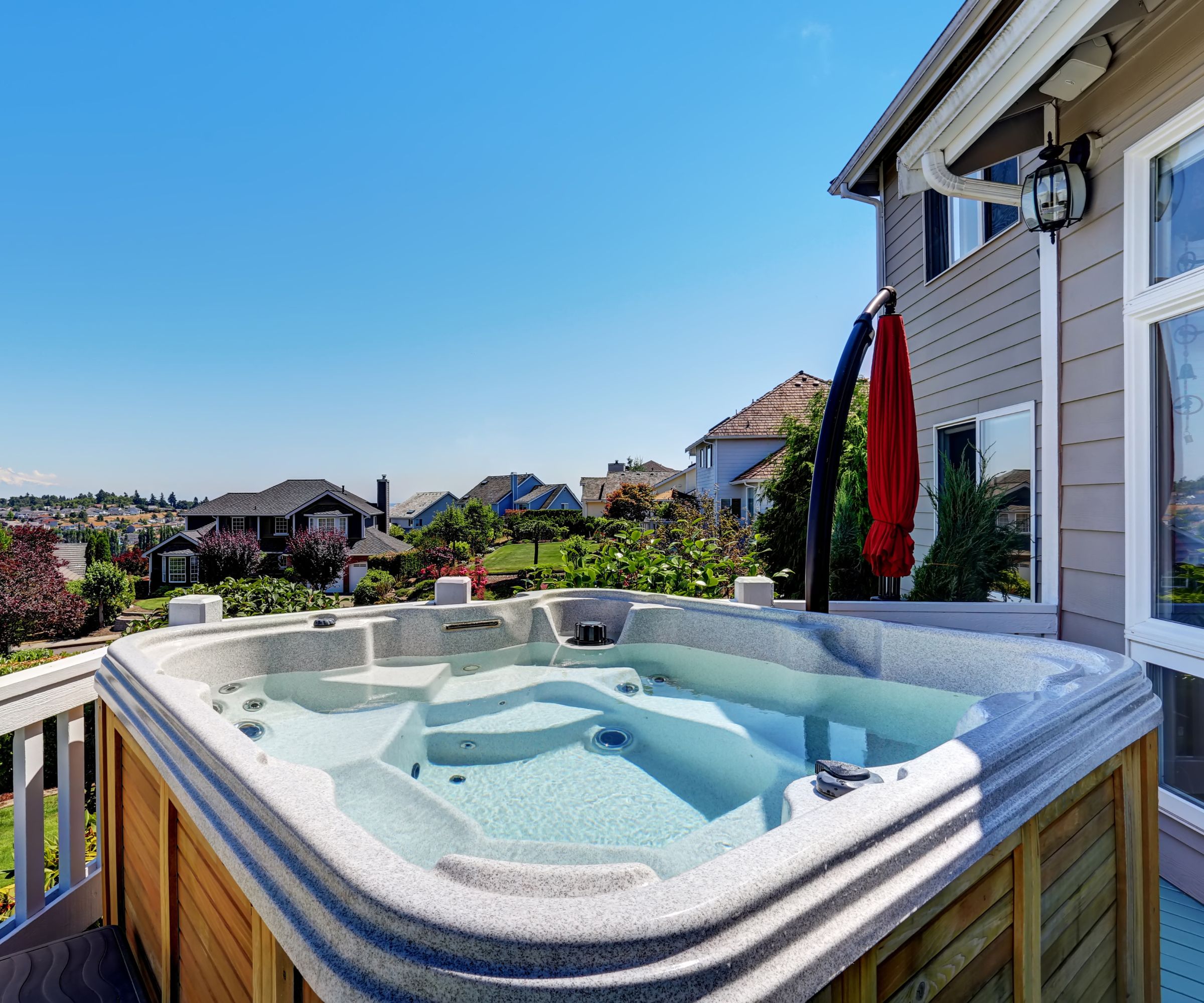
Once the shell is dry, you need to add antifreeze to prevent the plumbing lines from freezing and cracking in low temperatures. Scott Weitz says 'Be sure to use a non-toxic, propylene glycol-based antifreeze designed specifically for hot tubs. You can easily find this at stores like Lowe's, Home Depot, or your local pool supply shop. After draining and drying the tub, pour the antifreeze into the jets, pipes, pumps, and filter housing using a funnel. If possible, briefly run the pump to help circulate the antifreeze throughout the system.'
Just bear in mind that this isn't a good idea for everyone. Troy Lindbeck says that 'Adding antifreeze may make it harder for a spa owner to balance their spa in the springtime. Check with your local dealer to give you more peace of mind. '
Whatever you do, don't use car antifreeze - this is toxic. Just use a spa antifreeze like this from Amazon.
5. Cover the tub
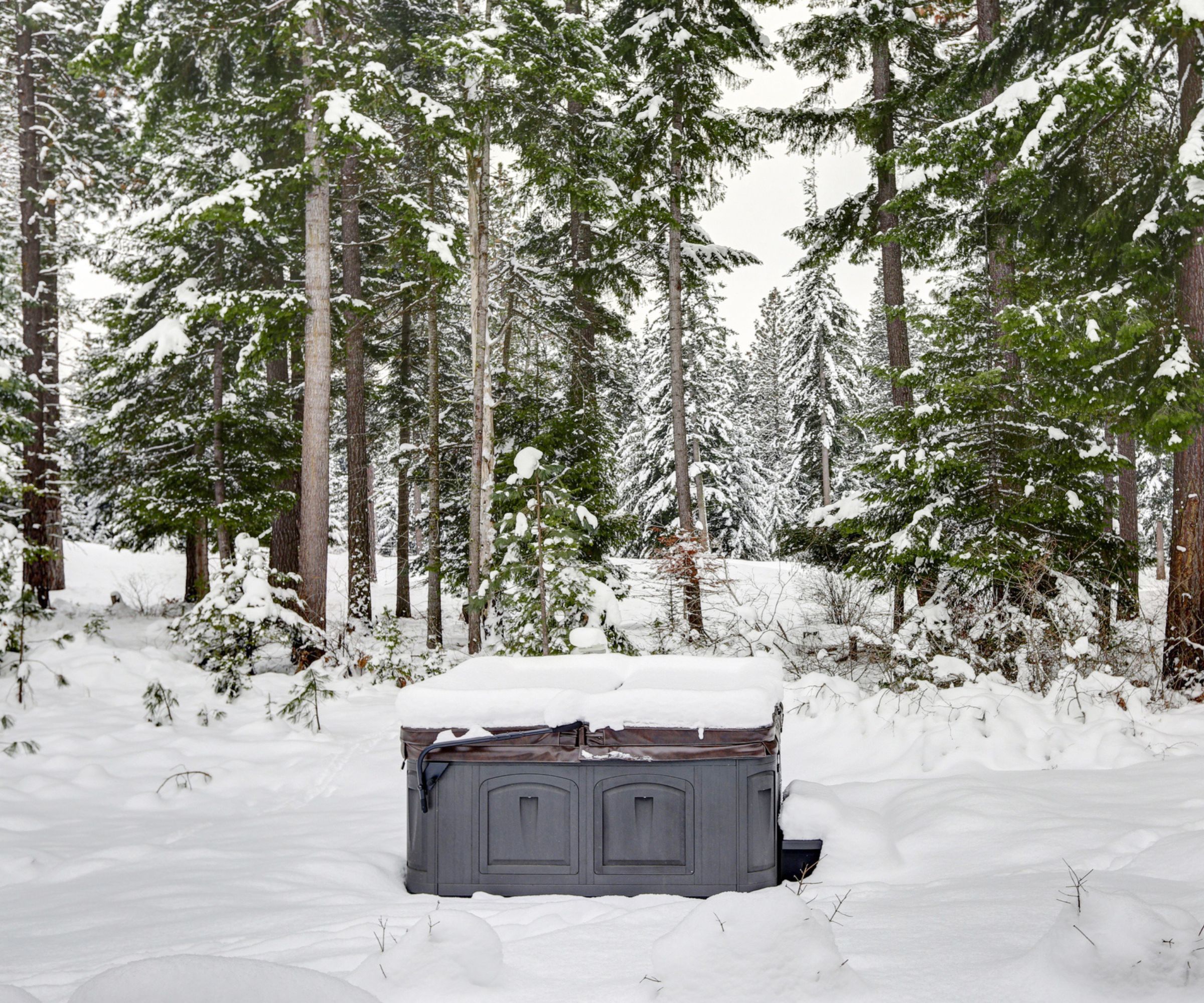
When the tub is clean, dry, and dosed with antifreeze, you need to cover it up for the winter. This keeps the shell warm so it doesn't crack in freezes and thaws, stops leaves and other debris from falling into your hot tub, and prevents animals from making nests in the shell.
Scott Weitz says 'Most hot tubs come with a cover when you purchase them, but if yours didn’t, you’ll want to select a high-quality, well-insulated cover that fits snugly.'
There are other little features to consider when you're shopping, too. Dylan says 'Look for a cover with UV protection and water resistance to ensure durability. Before covering your tub, make sure it’s clean and dry. Once ready, place the cover securely on top and fasten any straps or locks to protect it from wind and pests.'
You don't need anything too fancy, but if you get a lot of snow you need a foam hot tub cover like this at Amazon - a thin fabric cover won't be able to handle the weight.
6. Secure the cabinet
With the cover secure, there's one final job - making sure the hot tub cabinet is secure. Troy Lindbeck explains that 'Hot tub cabinets are designed to protect the internal components of the hot tub, but it is good to inspect them occasionally for gaps or wear.' Cabinets are also obvious spots for animals to hibernate over the winter, so it's important to pest-proof them.
Scott Weitz says 'To keep your hot tub cabinet in good condition, start by inspecting it for any gaps where pests might get inside. Seal these openings with caulk or weather stripping. You can also cover the vents with fine mesh to allow airflow while keeping pests out. Be sure to securely fasten any access panels. Keep the area around the hot tub free of debris, and if necessary, consider using pest repellents to deter any unwanted visitors.'
Winterizing a hot tub is only necessary if you won't use the hot tub in the winter. Lots of people love to use their tubs even as temperatures drop below freezing - it's completely safe to use a hot tub in winter, but you need to make it slip-proof as the ground ices over.







